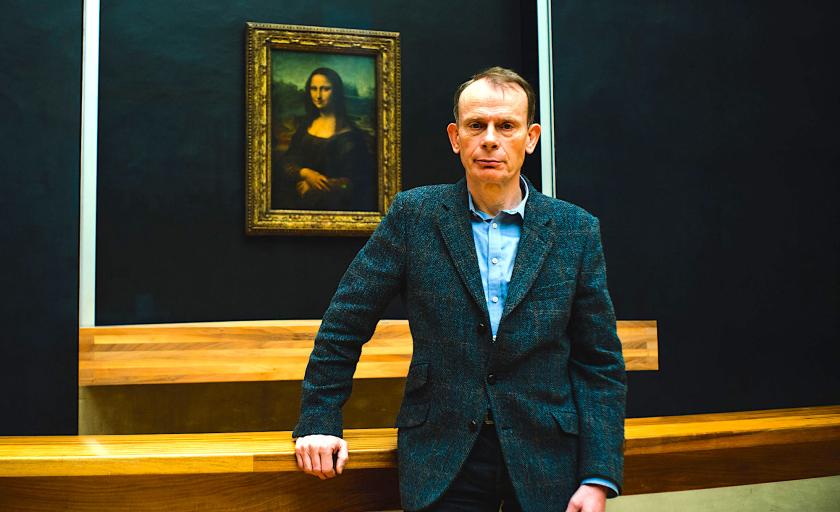Andrew Marr’s art show is a lot of fun, although engulfed in almost overwhelming banality and cliché. Our enthusiastic presenter is a self-confessed addict of art. As a pillar of television presentation, he is a natural for this series looking at individual paintings, 10 in all starting with Leonardo's Mona Lisa.
The “greatest” in the title is misleading, as this handful of the world’s best-known paintings are not necessarily the best. Aesthetically, the jury has long been out as to the quality of this early 16th century portrait. Her enigmatic smile fascinates, but she only leapt into mega-fame when she vanished, stolen from the Louvre by one of its own employees in 1911 and finally returned in 1914. The retelling of the theft was fascinating, but the only one of the quintet of experts brought in who managed to transcend any obvious comments was a charmer from the Bibliothéque Nationale who showed us the breathless newspaper reporting which put our heroine on the front page of every publication worldwide.
The Louvre is the biggest and famous art gallery in the world, we were told, visited by nearly 10 million annually. If they all came on the same day the queue would stretch to Moscow. Eight out of 10 queueing are here to see one thing, the Mona Lisa, and the biggest crowds happened in the three years of her absence when the public queued to see the empty space in the gallery.
 So what is the secret of the Mona Lisa? Da Vinci’s talents were recognised by his family – he was born in 1452 in a small town near Florence – and he spent 11 years in the studio workshop of the leading artist Verrocchio; Leonardo was a master craftsman from the age of 20. He experimented with the new technology of oil paint, and his use of perspective in his imagery was innovative, even revolutionary, as seen in his mural of The Last Supper in Milan. Leonardo declared that anatomy for a painter was what grammar is for a writer, and he dissected bodies in the mortuary of the central Florentine hospital. He saw painting as remaking nature.
So what is the secret of the Mona Lisa? Da Vinci’s talents were recognised by his family – he was born in 1452 in a small town near Florence – and he spent 11 years in the studio workshop of the leading artist Verrocchio; Leonardo was a master craftsman from the age of 20. He experimented with the new technology of oil paint, and his use of perspective in his imagery was innovative, even revolutionary, as seen in his mural of The Last Supper in Milan. Leonardo declared that anatomy for a painter was what grammar is for a writer, and he dissected bodies in the mortuary of the central Florentine hospital. He saw painting as remaking nature.
There has long been a mystery as to the Mona Lisa’s identity, but a consensus emerged in 2005. This was due to a note found in a German library claiming her to be Lisa del Giocondo, the wife of a trader in silks, textiles, possibly even slaves, and a business associate of Leonardo’s father.
Art and science were for Leonardo inseparable. His study of optics enabled Leonardo to portray her eyes as though they are following the spectator round the gallery. His studies of muscles allowed him to present her with her enigmatic smile, and she is not portrayed straight on but slightly sideways. It was the closest thing to naturalism in a portrait yet seen, and influenced young Raphael. Leonardo himself tweaked the painting throughout the rest of his life. He could not let it go.
By 1517 Leonardo went to work for Françoise I in Paris, and after the painter died in Amboise in 1519, his assistant sold the Mona Lisa to the French king. It entered the Louvre with the rest of the royal collection after the French Revolution. Until the theft in 1911 she was but one masterpiece among many.
Those who know something about the subject won’t have found much enlightenment, and those who know little will not have learned enough. Still, it was a thrill just to look at the Mona Lisa without the crowds, and to stroll through sunny Florence. And what carried us through was Marr’s fandom, and his passionate attachment and admiration of his subject.















Add comment